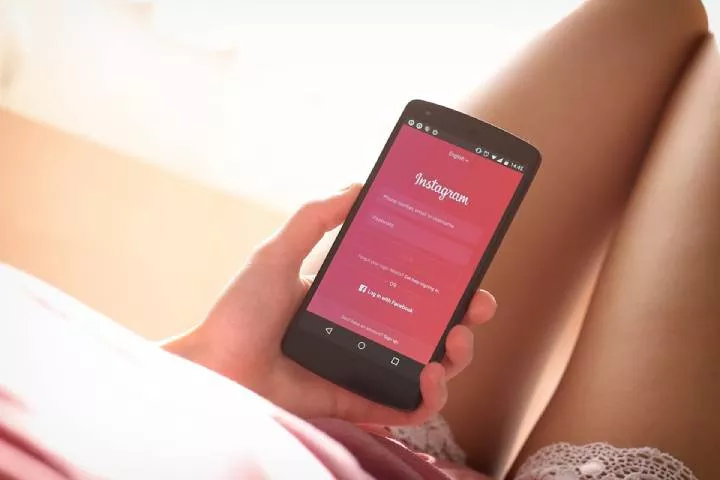Business
Bypassing the Middleman: The Rise of the D2C Trend
Overall, manufacturers who sell D2C have complete control over brand messaging, and they are in charge of how the product is presented to customers.

Consumers have changed their purchasing habits, expecting quick deliveries, personalization options, and quality products at affordable prices. On top of that, consumers today care about a brand’s sustainability efforts and impact on the environment. If their expectations are not met, they quickly move on to another retailer.
Table of Contents
1. Why Are Manufacturers Bypassing the Middleman
Manufacturers are pressured to meet consumer expectations in an increasingly competitive environment, and that’s why selling directly to consumers (D2C) is rapidly gaining momentum. It offers a way to get a product straight into the end consumer’s hands without dealing with the challenges of a traditional retailer.
In addition to that, manufacturers can offer products at much better prices and therefore improve profitability. They can gain deep insights into consumers’ feedback by communicating directly with them and building long-lasting relationships based on loyalty.
Overall, manufacturers who sell D2C have complete control over brand messaging, and they are in charge of how the product is presented to customers.
2. The Challenges of Going D2C
Cutting out the middleman is a strategic move towards improved efficiency, profitability, and better engagement with customers. However, this shift doesn’t come without challenges for manufacturers, who need to join the digital revolution and use innovative technology. Here are several D2C challenges and their possible solutions.
a. Fulfillment
A poor fulfillment experience is sure to disappoint customers and drive them away. But shipping one product to a single person is a lot different than shipping in bulk to retailers. The entire fulfillment process and the manufacturing process must be reimagined to satisfy customers’ expectations.
For example, a negative returns experience is more likely to drive customers away than the initial slow shipping experience. Considering ways to optimize operations, from raw material inventory management to shipping and delivery, is crucial in adopting the D2C model successfully.
b. Purchasing
Like the fulfillment issue, seamless purchasing is also an important consideration for manufacturers going D2C. This means that customers expect a smooth check-out experience with trustworthy payment options. Simplifying the log-in and check-out processes and expanding the payment options are pivotal in reducing the shopping cart abandonment rates and building trust with customers.
c. Marketing
As more and more businesses are trying to capitalize on the D2C trend, the competition has become more challenging than ever, with customer acquisition and retention costs rising exponentially. Optimizing the marketing budget, finding innovative advertising channels, and collaborating with industry influencers are avenues worth exploring to get the brand in front of the right audience.
d. Customer support
Customers expect the possibility to communicate with brands in real-time, whether that’s through email, phone, or social media channels. D2C brands must react fast when customers have an issue, but proactive is even more critical. Seeking feedback proactively, listening to customers, and acting on the data gathered will differentiate successful D2C brands from the rest.
e. Sustainable packaging
As said at the beginning of the article, consumers today value sustainable packaging. For example, a study by Deloitte reveals that younger consumers consider sustainability to be a top priority, with “Gen Z adopting more sustainable behaviors than any other groups: 50% reduced how much they buy, and 45% stopped purchasing certain brands because of ethical or sustainability concerns.” Manufacturers should consider sourcing eco-friendly materials and packaging and mitigate waste.
3. Final Thoughts
More and more brands will incorporate the direct-to-consumer model into their strategy, and this trend will continue in the coming years. Manufacturers are spending resources on optimizing processes, communicating with customers, and sustainability will stay ahead of the tough competition and emerge as tomorrow’s brands.
Business
Navigating the Process of Selling Deceased Estate Shares
This article aims to provide a comprehensive guide to selling shares from a deceased estate. Process of Selling Deceased Estate Shares.

Table of Contents
1. Understanding the Basics of Selling Deceased Estate Shares
Dealing with a deceased estate can be a challenging and emotional process, especially when it comes to handling financial assets like shares. This article aims to provide a comprehensive guide to selling shares from a deceased estate.
2. What are Deceased Estate Shares?
Deceased estate shares refer to the stocks and shares that were owned by an individual who has passed away. These shares become part of the deceased’s estate and are subject to the terms of their will or estate plan.
3. The Importance of Valuing the Shares
The first step in selling deceased estate shares is to obtain a current valuation. This valuation is crucial for several reasons: it helps in distributing the estate among beneficiaries, it may be necessary for tax purposes, and it gives an idea of the market value of the shares.
4. Legal Requirements and Executor Responsibilities
The executor of the estate plays a pivotal role in the management and distribution of the deceased’s assets. This section will cover the legal responsibilities and steps the executor needs to take to lawfully sell the shares.
5. Obtaining Probate
Before any action can be taken with the shares, it’s often necessary to obtain probate. Probate is a legal process that confirms the executor’s authority to deal with the deceased’s assets.
Transferring Shares into the Executor’s Name
Once probate is granted, shares may need to be transferred into the name of the executor. This process varies depending on the company and the type of shares.
6. The Process of Selling Shares
After completing legal formalities, the executor can proceed with selling the shares. This section will outline the steps involved in this process, including choosing a brokerage or financial service, understanding market conditions, and making informed decisions.
Deciding on the Right Time to Sell
Timing can significantly impact the returns from selling shares. Executors need to consider market conditions and financial advice to determine the best time to sell.
Completing the Sale
This subsection will detail the actual process of selling shares, including placing orders, handling transaction fees, and ensuring all regulatory requirements are met.

7. Navigating Tax Implications and Reporting
Managing tax obligations is a critical aspect of selling deceased estate shares. This section will explain the potential tax implications and the importance of accurate reporting for both capital gains tax and inheritance tax considerations.
Understanding Capital Gains Tax Responsibilities
When shares are sold, any profit made from the time of the deceased’s passing to the sale date may be subject to capital gains tax. Executors need to be aware of these implications and plan accordingly.
Inheritance Tax Considerations
In some jurisdictions, the value of the deceased estate’s shares might impact inheritance tax calculations. It’s essential for executors to understand these aspects in order to ensure compliance with tax laws.
8. Common Challenges and How to Overcome Them
Selling deceased estate shares can present unique challenges. This section will discuss common issues such as disputed wills, fragmented information about the shares, and market volatility.
Dealing with Disputed Wills and Beneficiary Disagreements
Disputes over the will or disagreements among beneficiaries can complicate the process. Executors must handle these situations delicately and legally.
Managing Market Volatility
Shares can be subject to market fluctuations. Executors should be prepared for this volatility and may need to consult financial advisors to navigate these waters effectively.
9. Tips for Executors Handling Deceased Estate Shares
This section will provide practical advice for executors, including the importance of seeking professional advice, keeping thorough records, and communicating clearly with beneficiaries.
Seeking Professional Financial and Legal Advice
The complexity of selling shares from a deceased estate often necessitates professional advice. This can range from legal counsel to financial advisory services.
Record Keeping and Communication with Beneficiaries
Maintaining transparent and thorough records is crucial. Executors should also prioritize clear and consistent communication with all beneficiaries to avoid misunderstandings.
Conclusion
Selling shares from a deceased estate is a responsibility that requires careful attention to legal, financial, and interpersonal dynamics. By understanding the process, staying informed about tax obligations, and tackling challenges head-on, executors can fulfill their duties effectively and respectfully.

 Instagram3 years ago
Instagram3 years agoBuy IG likes and buy organic Instagram followers: where to buy them and how?

 Instagram3 years ago
Instagram3 years ago100% Genuine Instagram Followers & Likes with Guaranteed Tool

 Business4 years ago
Business4 years ago7 Must Have Digital Marketing Tools For Your Small Businesses

 Instagram3 years ago
Instagram3 years agoInstagram Followers And Likes – Online Social Media Platform





















